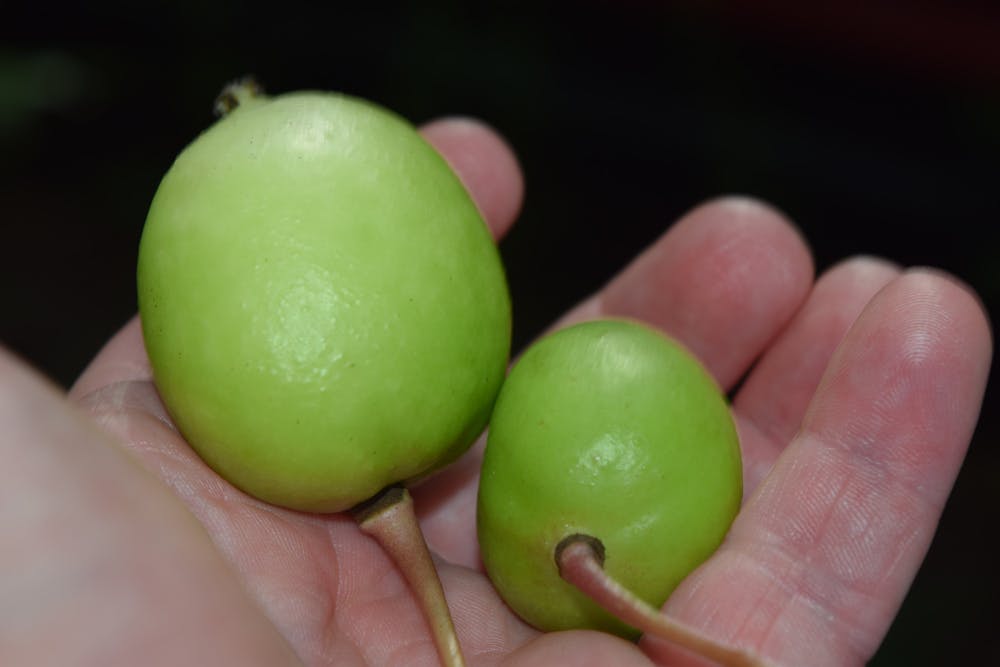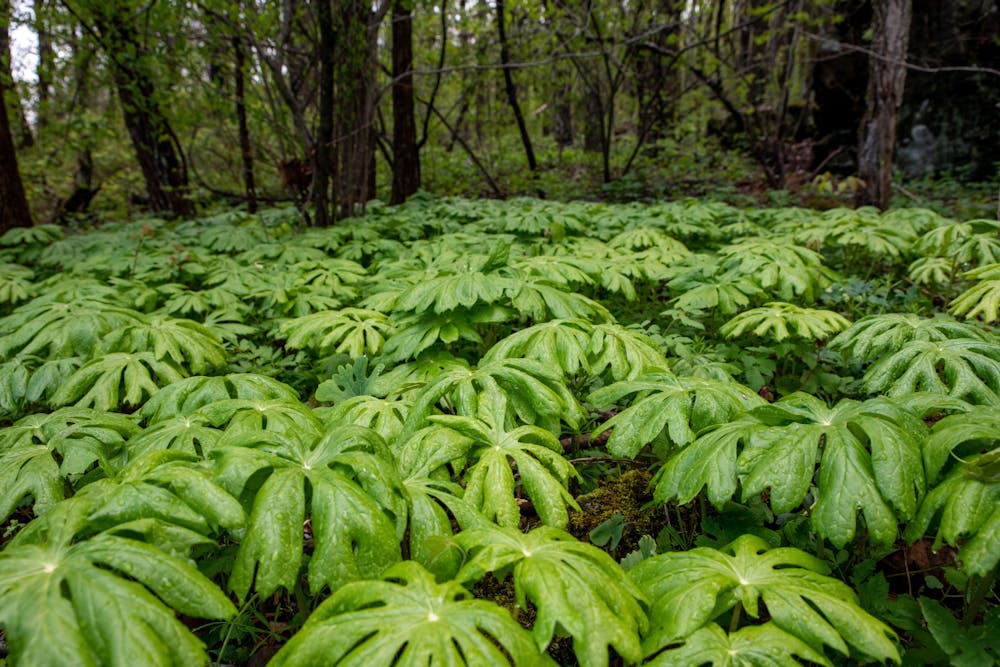By Mike Sherr
Editor-in-Chief
One might expect to hear about poisonous plants when talking about exotic destinations like the Brazilian Amazon or the Australian Outback. Not many people would instantly think that New Jersey would be home to quite a few deadly plants. While most of them should be avoided entirely, the mayapple (Podophyllum peltatum) could be a dangerous snack for the risk taking forager.
Also known as American mandrake, this native plant is almost entirely toxic. The stems, roots, leaves and seeds all have toxins like podophyllotoxin as well as alpha and beta peltatin. Ingesting any of these parts of the plant will make you extremely sick and may be fatal. The fruit of the mayapple also has these toxins, but only before it is ripe. Only when the fruit turns into a golden color can it be harvested and eaten as long as the seeds are removed.
So the question is, why would anyone ever try to eat this?

Almost ripened mayapple fruits (Photo courtesy of Flickr / "DSC_4554" by Jena Fuller. June 20, 2015).
If you do a little digging, it becomes clear that many of the plants that we eat are in similar situations. Tomatoes (Solanum lycopersicum) for example are a staple in many Western dishes, but the leaves, roots and stems all have a toxin called tomatine. Apples (Malus domestica), cherries, apricots, peaches and nectarines (Prunus spp.) each have seeds that have chemicals which turn into cyanide when they come into contact with human stomach acid.
Plants have evolved to protect themselves from predators like the vicious turtle or evil deer. While some use thorns to scare off herbivores and omnivores, others have adapted to poison those higher up on the food chain than them.
The Alnwick Garden in the United Kingdom is a popular tourist attraction for botanists and daredevils alike. The garden is home to specifically a poison garden full of extremely deadly plants. Most visitors attend and are surprised to see the number of plants that are common in their own garden. Other visitors take part in the tours and end up leaving in an ambulance after passing out along the route.
Common poisonous plants like mayapples or tomatoes, obviously, won’t instantly kill you. In larger quantities, however, a good number of plants are poisonous and even deadly.
In order to avoid the poisonous effects of the mayapple, only harvest the fruit when it is golden yellow and when you start to see wrinkles form on the skin. Make sure to keep a watchful eye on the plant as animals like raccoons and turtles jump on the chance to feast as soon as they are ripe.
While the excitement of eating this fruit is enticing, the fruit itself gets some mixed reviews. Some foragers describe the taste as sweet and tart, others think the bland flavor is not worth the risk of dying. For those interested in testing the poisonous waters, mayapple can be made into smoothies, jams, cake and ice cream.




